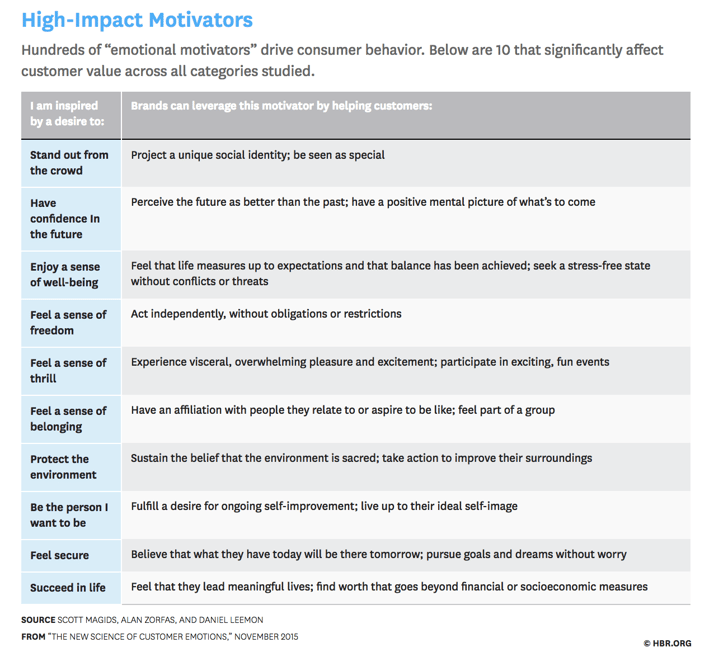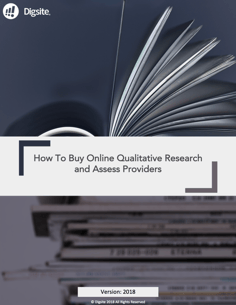How well do you know your customers? You may know what they like and what they do, but do you understand why? Context is often overlooked as a key driver of decision making. The more concrete of a grasp you have on the customer journey, the better positioned your company will be to achieve its business goals.
Overview:
- Researchers have always been interested in customer attitudes and behaviors
- Understanding the context that influences those attitudes and behaviors helps organizations gain an edge
- By researching the customer journey and getting a better understanding of how your customers interact with your brand, you can optimize the customer journey and continuously deliver more value
Whether you are in sales, marketing, innovation or customer support, your success depends on understanding customers beyond sales or operational data.
To get the results you’re eyeing, you need to understand:
- ATTITUDES: What is important to your customers and why? If you don’t have a good idea about what makes them tick, it’ll be that much harder to sell to them effectively.
- BEHAVIORS: How do your customers engage or interact with your products? If you’re unsure as to how they are actually used, how can you reasonably expect to improve future iterations of your products?
- CONTEXT: What are the broader situations that drive behavior? Who are the people that are around your customers when they are considering making purchasing decisions? What other things are they trying to accomplish that might impact their decisions? What is happening when your customers are going through the purchase process? What is the experience as they use your (or your competitor's) products or services? The more context you have about what’s driving your customer decisions—the why that drives their actions—the better positioned you’ll be to sell effectively.
Historically, marketers and researchers have focused on understanding their customers’ attitudes and behaviors—without showing as much interest in the context that shapes and influences both of them.
For example, let’s say your favorite brand of coffee is Blue Bottle. Someone asks you what brand of coffee you drank this morning and you tell them you drank Caribou. Why?
It’s not because your favorite brand of coffee switched overnight. You just happened to have Caribou Coffee in your cupboard and you didn’t feel like going to the store. Understanding the context behind why you drank Caribou Coffee is critical to knowing why you decided to drink something other than your favorite brand of coffee.
The best way to understand the intersection of attitudes, behaviors and context is to capture, measure and continuously optimize the customer journey, or the steps your customers go through as they purchase your products and interact with your brand. The more thoroughly you understand these journeys, the more effectively you’ll be able to sell.
.png?width=938&name=Engage%20(3).png)
The good news is that—in the age of online qualitative research—capturing the customer journey isn’t as hard as it might sound. Before we detail why that is, let’s take a look at seven ways that understanding customer journeys can help your business get to the next level.
How Capturing Customer Journeys Can Transform Your Business
Without a deep understanding of the customer purchase and usage journey, you are shooting in the dark when you develop new products or make improvements to the customer experience. Failure to capture these insights forces your company to make decisions based on gut instinct - creating high failure rates and missed opportunities relative to competition.
Measuring the customer journey beyond operational data can help you move forward with confidence—and the peace of mind that you've identified the right opportunities AND come up with solutions that will work within the context of how people use your products or services. Consider these seven transformational opportunities:
1. Entering new markets
It’s no secret that entering a new market—and emerging successfully on the other side—is a difficult undertaking. You need to do a lot of research to figure out whether it even makes sense to expand into an established category or region in the first place.
Assuming your research convinces you that entering a new market is the right move, your work isn’t done just yet. To increase the chances you’ll succeed, you need to understand how your customers are behaving in existing markets and why they’re acting the way they are. Online journey diaries can give you the insider track on how current offerings are falling short and what you can do to position your company to succeed.
2. Identifying new product innovations
The best way to grow your product category or market share is to add new innovative features or functions to your products - or unveil a new product altogether.
Succeeding at this type of innovation starts with thoroughly understanding your customers’ pain points and problems. By measuring the customer journey with online qualitative research, you can understand exactly what your customers are thinking—and how they are doing it. This opens the door to applying innovation to better address the "jobs to be done" by your product or service.
3. Improving customer experiences
Improving the customer experience (CX) is a top priority for today’s leading organizations. Not only are 86% of customers likely to continue supporting brands that serve up positive customer experiences, 77% of them are likely to recommend them to their peers. Logic tells us that the better your customer experiences are, the more revenue you’ll generate.
To this end, CX is increasingly becoming a key differentiator among brands. To improve your CX and create more customer loyalty, you first need to dive into the customer journey and understand how customers physically, contextually and emotionally experience your product or service at each step.
4. Updating brand positioning
If you really want to resonate with your customers, you need to connect with them on an emotional level. In fact, according to the Harvard Business Review, emotional connections are even more important than customer satisfaction!
Companies that don’t understand the context behind their customers’ actions will have a difficult time establishing an emotional connection with them—if they’re even able to. By using online qualitative to understand the customer journey, companies can illuminate that context and update their brand positioning to reflect that emotional connection.
 [source: https://hbr.org/2016/08/an-emotional-connection-matters-more-than-customer-satisfaction]
[source: https://hbr.org/2016/08/an-emotional-connection-matters-more-than-customer-satisfaction]
5. Identifying retail opportunities
The customer experience isn’t always something that’s internalized.
For example, CPG companies need to understand how customers interact with their products in retail environments. They need to understand what customers are looking for and attracted to in order to create packaging and signage that pops out and catches the eye.
Instead of just guessing, leading companies are increasingly using online qualitative solutions to learn how customers plan, shop and engage in retail environments and build retailer specific products and marketing programs.
6. Improving user experiences
Successful companies spend a lot of time measuring the user experience (UX) on their websites and mobile apps, and figuring out what they can do to improve it. Not only do positive user experiences drive good behavior, negative user experiences cause customers to look for substitutes.
It’s not enough to simply understand that your customers are clicking on your app, website or device. Instead, you need to understand their intentions and why they are clicking so you can continue to optimize the UX further. Online qualitative can make capturing this type of understanding possible, capturing a 360 degree view of user experiences opening the door to creative new solutions to improve UX.
7. Responding to competition or market changes
There is no doubt that technology has accelerated innovation making it harder than ever to anticipate market shifts. As you see emerging products or changes to competitive products or services, it is critical to learn how customers are responding to change. Without these insights, you may chase after a fad, or discount a new offering that is poised to dominate your industry in the coming years.
Again, online qualitative research solutions can help you truly assess emerging products or services that might be impossible to test quantitatively. Armed with insights on how and why new offerings are gaining traction, you’ll be better positioned to respond effectively.
Capturing the Customer Journey Online
While it might sound like a massive undertaking, capturing the customer journey is actually much easier today thanks to innovative online solutions like Digsite.
You don’t need seven different tools to measure the seven different experiences above.
With platforms like Digsite, you can:
- Capture in-the-moment activities on mobile devices with photos and videos
- Record diaries of experiences over days or weeks—or longer periods of time
- Get feedback on specific aspects of daily customer routines and interactions
- Even test new solutions or ideas that you generate along the way
Online customer journey research opens up a whole new world of understanding. With more accurate, up-to-date information on hand about your customers’ attitudes and behaviors—and more importantly, the context that’s influencing them—your organization can deliver more value to your customers through better products and services in more markets.
To learn how to get started with online qualitative research, check out our eBook "How To Buy Online Qualitative Research and Assess Providers."
Stay tuned: Up next, we’ll explore how you can use online qualitative research to get the insights you need to become an expert in the customer journey—using that information to take your business to the next level.





